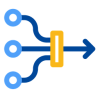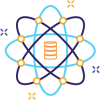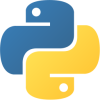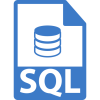Learn Advance Your Future.
Find the best courses, videos, books, podcasts, and blogs to learn a new skill
Trending Skills
Type
Skill level
Cost
Machine Learning Bookcamp
The only way to learn is to practice! In Machine Learning Bookcamp, you'll create and deploy Python-based machine learning models for a variety of increasingly challenging projects. Taking you from the basics of machine learning to complex applications such as image and text analysis, each new project builds on what you've learned in previous chapters. By the end of the bookcamp, you'll have built a portfolio of business-relevant machine learning projects that hiring managers will be excited to see.
Machine Learning for Business
Machine Learning for Business teaches business-oriented machine learning techniques you can do yourself. Concentrating on practical topics like customer retention, forecasting, and back office processes, you'll work through six projects that help you form an ML-for-business mindset. To guarantee your success, you'll use the Amazon SageMaker ML service, which makes it a snap to turn your questions into results.
Machine Learning with R, Tidyverse, and MLR
Machine learning (ML) is a collection of programming techniques for discovering relationships in data. With ML algorithms, you can cluster and classify data for tasks like making recommendations or fraud detection and make predictions for sales trends, risk analysis, and other forecasts. Once the domain of academic data scientists, machine learning has become a mainstream business process, and tools like the easy-to-learn R programming language put high-quality data analysis in the hands of any programmer.
Mastering Large Datasets
Modern data science solutions need to be clean, easy to read, and scalable. In Mastering Large Datasets with Python, author J.T. Wolohan teaches you how to take a small project and scale it up using a functionally influenced approach to Python coding. You'll explore methods and built-in Python tools that lend themselves to clarity and scalability, like the high-performing parallelism method, as well as distributed technologies that allow for high data throughput.
Math and Architectures of Deep Learning
The mathematical paradigms that underlie deep learning typically start out as hard-to-read academic papers, often leaving engineers in the dark about how their models actually function. Math and Architectures of Deep Learning bridges the gap between theory and practice, laying out the math of deep learning side by side with practical implementations in Python and PyTorch. Written by deep learning expert Krishnendu Chaudhury, you'll peer inside the �black box� to understand how your code is working, and learn to comprehend cutting-edge research you can turn into practical applications.
Practical Data Science with R, Second Edition
Practical Data Science with R, Second Edition takes a practice-oriented approach to explaining basic principles in the ever expanding field of data science. You'll jump right to real-world use cases as you apply the R programming language and statistical analysis techniques to carefully explained examples based in marketing, business intelligence, and decision support.
Practices of the Python Pro
With Practices of the Python Pro, you'll learn to design professional-level, clean, easily maintainable software at scale using the incredibly popular programming language, Python. You'll find easy-to-grok examples that use pseudocode and Python to introduce software development best practices, along with dozens of instantly useful techniques that will help you code like a pro.
Python Workout
In Python Workout, author Reuven M. Lerner guides you through 50 carefully selected exercises that invite you to flex your programming muscles. As you take on each new challenge, you'll build programming skill and confidence. The thorough explanations help you lock in what you've learned and apply it to your own projects.
R in Action
R in Action, Second Edition presents both the R language and the examples that make it so useful for business developers. Focusing on practical solutions, the book offers a crash course in statistics and covers elegant methods for dealing with messy and incomplete data that are difficult to analyze using traditional methods.
Reactive Data Handling
Reactive Data Handling is a collection of five hand-picked chapters introducing you to building reactive applications capable of handling real-time processing with large data loads. You'll start with the high-level architecture of reactive applications and then look at low-level practical aspects.
Real-World Machine Learning
Real-World Machine Learning is a practical guide designed to teach working developers the art of ML project execution. Without overdosing you on academic theory and complex mathematics, it introduces the day-to-day practice of machine learning, preparing you to successfully build and deploy powerful ML systems.
Think Like a Data Scientist
Think Like a Data Scientist teaches you a step-by-step approach to solving real-world data-centric problems. By breaking down carefully crafted examples, you'll learn to combine analytic, programming, and business perspectives into a repeatable process for extracting real knowledge from data






